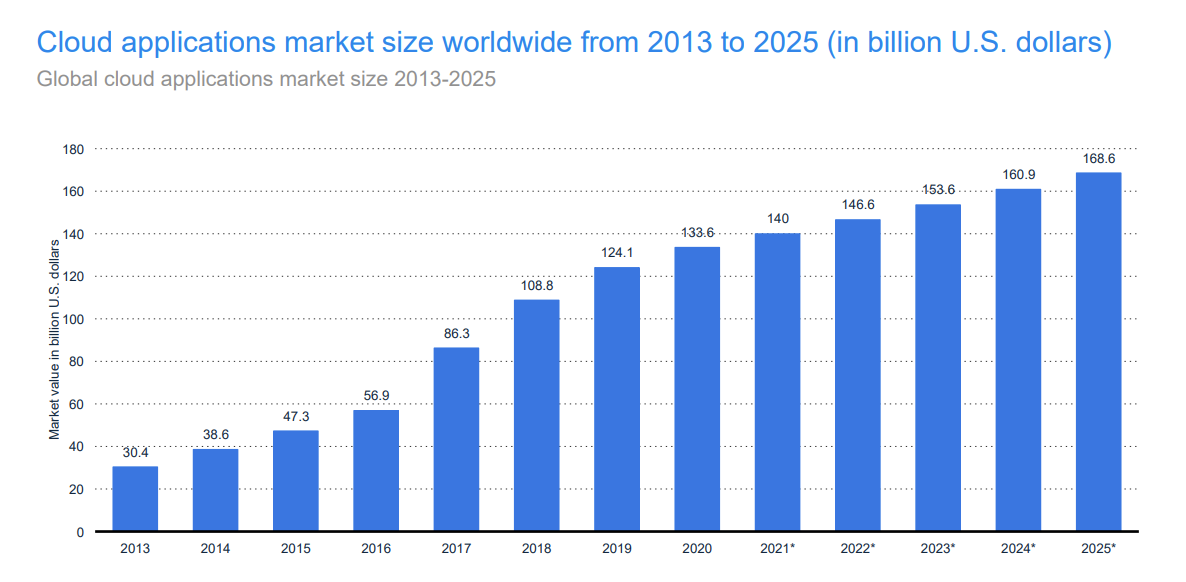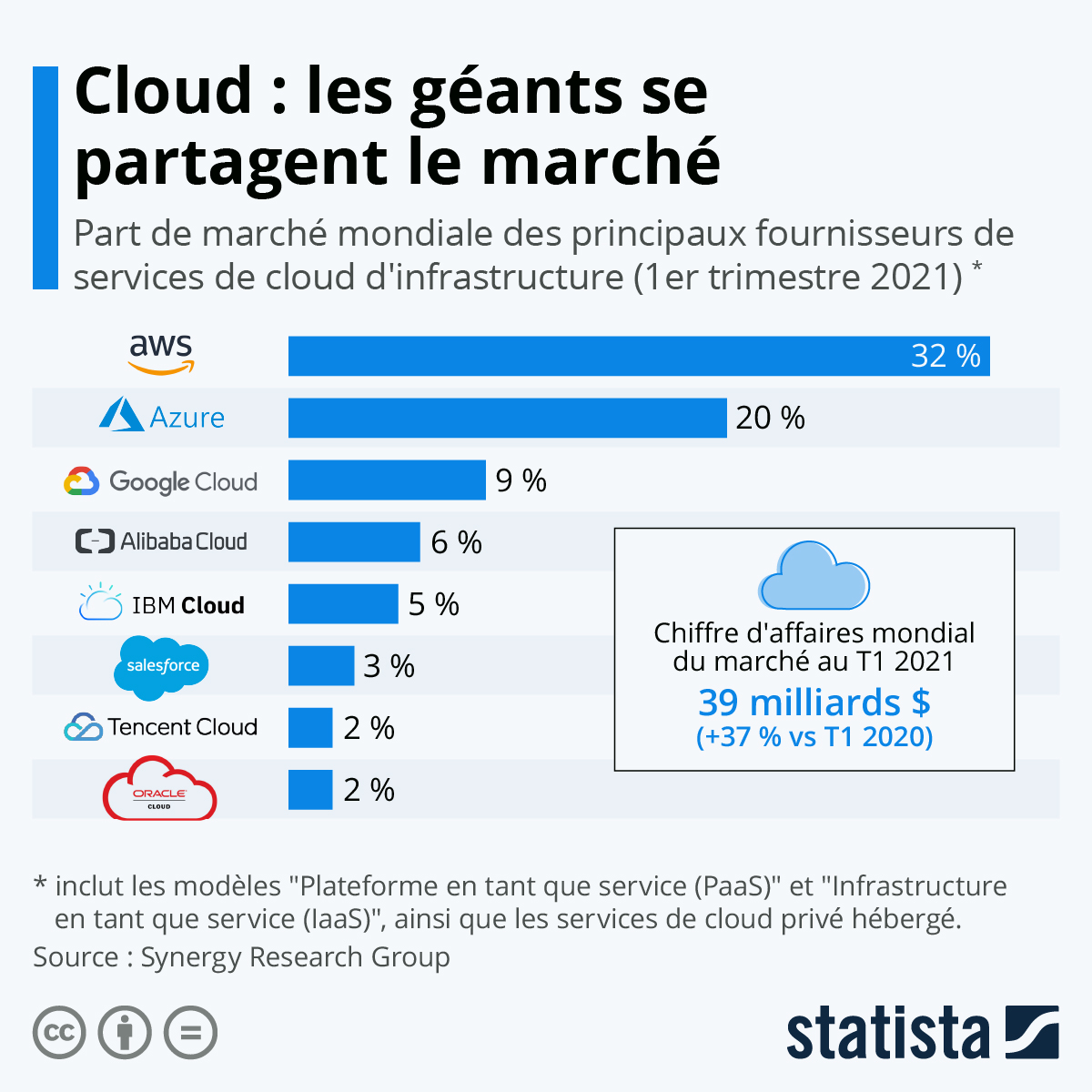But what is the cloud exactly?
Cloud computing is a computer system operating by the joint action of disparate elements brought together regardless of their geographical location and the underlying infrastructure. Simply put, it is the provision of computing services (servers, storage, databases, network management, software, analysis tools) via the Internet with the aim of offering more flexible resources to people and businesses.
The cloud allows you to rent your computing rather than buying it. Instead of investing heavily in databases, software and hardware, companies are choosing to access this computing power via the Internet and pay as they are used. When a company “goes to the cloud”, it means that its IT infrastructure is stored offsite, in a data center managed by the cloud computing provider. Instead of spending money and resources on legacy IT systems, customers can focus on more strategic tasks. Without making a huge upfront investment, businesses can quickly access the IT resources they need and pay only for what they need.
The advantages of cloud computing in terms of cost, scale, performance or reliability, compared to a traditional approach, are leading companies all over the world, large and small, to migrate to cloud solutions.
A distinction is generally made between the public cloud owned and operated by a third-party cloud service provider that offers computing resources such as servers and storage, and the private cloud used exclusively by a business or organization. The hybrid cloud being a symbiosis of the two powered by technology to share data and applications.
Solutions as a service
Most cloud computing services can be classified into four broad categories: IaaS (infrastructure as a service), PaaS (platform as a service), SaaS (software as a service) and serverless computing. IaaS lets you rent IT infrastructure from a cloud service provider with pay-as-you-go. PaaS are services that provide an on-demand environment for developing, testing, delivering, and managing software applications (developers can quickly create web or mobile applications without having to worry about setting up or managing the infrastructure of servers, storage, network and databases necessary for development). SaaS are software applications available on demand and usually by subscription. With SaaS, cloud service providers host and manage software applications and the underlying infrastructure, and handle maintenance, such as upgrading software and the application of security patches. Users connect to the application over the Internet, typically through a web browser on their phone, tablet, or PC. Finally, serverless computing overlaps with PaaS by focusing on creating application functionality without wasting time in the ongoing management of servers and the infrastructure required for this purpose.
As you will have understood, cloud computing offers multiple functionalities to individuals but above all to companies, whether to create cloud-native applications, store, save and recover data, distribute content or software on demand, test and generate applications, analyze data or incorporate intelligent models to interact with customers.
This market should experience strong growth over the next ten years. Ark Invest predicts that this market will weigh nearly 10 trillion dollars by 2030.
Here is a projection of the cumulative market capitalization of all public cloud services combined (IaaS, SaaS, PaaS, serverless computing) for 2022:
Source: Statista
A projection of the cumulative market capitalization of cloud applications by 2025:

Source: Statista
The cloud war has already begun:
In this little game, the web giants, namely GAFAM (Alphabet, Apple, Meta Platforms, Amazon and Microsoft) have already positioned themselves as the master. Their Chinese counterparts (Ali Baba, Tencent, JD.com) also entered the race. We also find Salesforce, IBM and Oracle well placed in the rankings. They all want to be first and invest heavily in their infrastructure. Indeed, the scale effect is important for reducing costs and offering an offer that is becoming the norm for companies (much like Microsoft has succeeded in doing with its Office office suite). The best-performing solutions are likely to win the largest market share in each industry, as customer retention drives profitability in a scalable business like the cloud. Amazon Web Services (AWS) is currently the competitor to beat with 32% market share and remains ahead of its rivals. As shown in the chart below, the top 8 cloud providers control 80% of the market share.

Source: Statista

Source: Synergy Research Group
We can also cite smaller (and more risky) players, each with their specificities but presenting great long-term potential such as ServiceNow, Arista Networks, intuitive, Paycom Software, Mimecast, Veeva Systems, SPS Trade or Qualys.
If you wish to consult the thematic list of cloud computing players, the MarketScreener experts have identified for you the main cloud computing players on a global scale. This list is limited to 100 companies selected according to fundamental criteria and capitalization filters.
Click here to discover the thematic list
